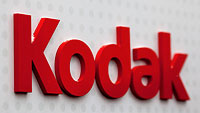Leaner, meaner Kodak leaves consumer space, prepares to emerge from bankruptcy
posted Wednesday, August 21, 2013 at 3:51 PM EST

At Eastman Kodak, things are finally looking up for a long-troubled giant of the imaging industry. Nineteen months ago, the company that once dominated film photography finally filed for bankruptcy. Yesterday, the U.S. Bankruptcy Court for the Southern District of New York approved its plan to reemerge as a leaner, meaner company with a much more limited focus. The court's approval follows hot on the heels of a positive response from creditors voting for the same reorganization plan.
With these two hurdles removed, the company is now very close to emerging from Chapter 11 status. The current plan is for this to happen in less than a fortnight, on September 3rd.
In an official statement, Kodak chairman and chief executive officer, Antonio M. Perez, noted that: "This critically important milestone marks the final step in the Court process. Next, we move on to emergence as a technology leader serving large and growing commercial imaging markets – such as commercial printing, packaging, functional printing and professional services – with a leaner structure and a stronger balance sheet. There are additional transactional steps ahead as we complete our Chapter 11 restructuring, but with the Court’s decision today, our emergence is now imminent."
The Kodak which emerges next month will be very different to that which entered bankruptcy protection in early 2012. With the court's approval, it has essentially exited the consumer space altogether, in favor of "commercial printing, packaging, functional printing and professional services," as Perez put it in his statement. The company no longer makes digital cameras, camcorders, or photo frames, and is no longer producing new consumer inkjet printers either, although a few models can still be found at retail. It has also sold its online photo sharing / photofinishing business.
From a consumer perspective, that means the once-mighty Kodak badge will be seen only on photo kiosks, and on third-party products from licensees like JK Imaging and Sakar. In this respect, the company finds itself in a similar position to one-time rival Polaroid, another giant of the film era which fumbled the transition to digital, and ended up as a licensed brandname on other companies' products.
On the B2B side, Kodak also shed its image sensor business, and sold its document imaging and personalized imaging businesses to its own United Kingdom-based pension plan. And keeping itself afloat also meant that the company had to sell a hefty chunk of its patent portfolio, although it received barely a quarter of what it once expected for the intellectual property.
Still, the painful pruning back was apparently worthwhile. These and other moves were apparently enough to satisfy the courts of the company's viability, and it will now emerge with a narrower focus on commercial printing, packaging, and professional services.
To accompany its phoenix-like resurrection, the company will sport an almost entirely new board of directors, as well. Only three individuals from the current board will remain: current chairman and CEO Antonio Perez, as well as William G. Parrett (an executive and director at Thermo Fisher Scientific) and James V. Continenza (executive chairman of The Berry Company).
The trio will be joined by six new directors: Mark S. Burgess (chairman of the Clondalkin Group), George Karfunkel (chairman of the Sabr Group), Jason New (senior managing director of The Blackstone Group), Derek Smith (managing principal at BlueMountain Capital Management), Matt Doheny (president of North Country Capital), and John A. Janitz (chairman of Evergreen Capital Partners).
The new board will take up its role as soon as the emergence from Chapter 11 is complete, and will remain in place until the next annual meeting of the company’s stockholders.